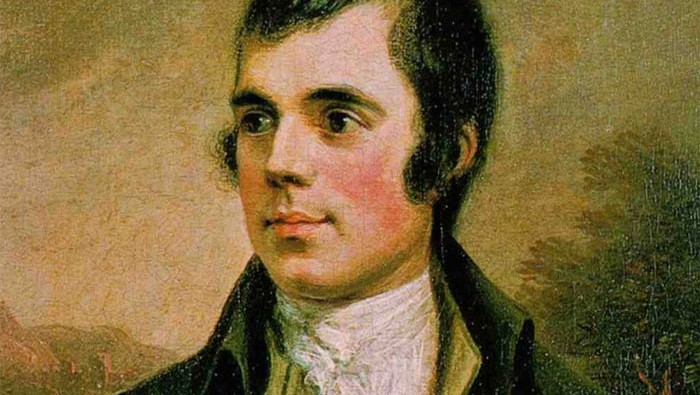Burns Night is a special event celebrated in Scotland on January 25th. It honours and celebrates the life of Robert Burns, a Scottish poet born on this day in 1759. In this week’s blog, we’ll look at everything Burns Night. By the time you’ve finished reading, you’ll know all about Robert Burns and what this special night entails. So, without further ado!
Who is Robert Burns?
As mentioned above, Robert Burns was a Scottish poet from the 18th century. He was born in rural Alloway, Ayrshire to farmer parents. Despite the difficulties of rural life during that time, Burns had an incredible way with words, which he used to write poetry and music. Themes central to his work include the everyday joys and sorrows of Scottish rural life, giving him the nickname ‘The Ploughman Poet’.
As with most poets, it wasn’t until after his death that Burns became really famous. To this day, he is one of Scotland’s most beloved figures, especially in the literary world.
Idiom of the Week: Way with words
This means someone is very good at talking or writing in a beautiful, poetic, or effective way.
A worldwide classic
Some of his most famous poems include “To a Mouse” and “Tam o Shanter”. However, it’s one of his songs you may have heard before; “Auld Lang Syne.” That’s right, the song sung worldwide just after midnight on New Year’s Eve is from the one and only Robert Burns. Who would have thought?
The song is about friendship and remembrance, with “Auld Lang Sang” meaning “old long since” or “days gone by.” Although Burns didn’t initially write the song for New Year’s, its meaning is fitting for looking back to the past year and welcoming a new one. As Scottish people migrated across the world, they likely brought this song with them. Then, at some point, over the years, it became part of the New Year tradition we have today.
Back to Burns Night!
Burns died in 1796 and just a few years after in 1801, the first Burns Night was celebrated. To begin with, a few of his friends simply got together to celebrate his life. Over the years, however, it’s become a nationwide celebration in Scotland.
Phrasal Verb Vibes: Get together
This phrasal verb has not one, but three different meanings. These include:
- To meet socially: «Let’s get together for coffee tomorrow.»
- To gather or unite: «The team got together to plan the project.»
- To start a relationship: «They got together last year and are still dating.»
So, what does a typical Burns Night look like?
Most Scots celebrate Burns Night with loved ones at home. Although, some events happen in pubs and bars. The most common celebration however is with friends and family at home. A typical Burns Night celebration would include some or all of the following:
Setting the mood
People create the most Scottish atmosphere possible in their homes. Think tartan decoration and bagpipe music. Some guests might even wear a kilt or other tartan-patterned clothes. Candles and dim lighting are also used to set the mood and create a more old-fashioned feel.
Idiom of the Week: Set the mood
This means to create a feeling or atmosphere, like romantic, fun, or serious.
Eating a traditional Scottish meal
This is easily the most important part of the celebration. You’ll usually find staple Scottish food items like:
- Soup: Usually Scotch broth or leek and potato soup, served as a starter.
- Haggis: This main and most important dish is made from sheep’s heart, liver, and lungs and then mixed with oats and spices, which are cooked in the sheep’s stomach lining. It’s not for everyone shall we say!
- Neeps and tatties: This is basically mashed turnips (neeps) and mashed potatoes (tatties).
- Cranachan: A typical dessert made with whipped cream, honey, oats, and raspberries.
- Clootie dumpling: A steamed fruit pudding made from dried fruits, spices, suet (fat), and flour.
Including a ceremonial element
There’s a ceremonial or ritualist even aspect to Burns Night, these include traditions like:
- The Selkirk Grace: This is a short prayer said before the meal. It is spoken in Scots, one of Scotland’s traditional languages.
- Address to a Haggis: The haggis is brought to the table, while bagpipe music plays. Usually, the host, but sometimes a guest, recites Burns’ poem «Address to a Haggis«, a poem he wrote for the dish. The haggis is then sliced open while guests clap and cheer.
- The Toasts: throughout the evening there are some different toasts. These are little ritualistic words said to honour something, like when you say cheers before drinking an alcoholic beverage. The toasts usually occur in this order:
- Toast to the Haggis: A toast to honour the haggis as the evening’s main dish.
- Immortal Memory: A speech or toast dedicated to Robert Burns.
- Toast to the Lassies: A humorous toast to the women present at the event, often filled with playful jokes.
- Reply to the Lassies: A witty response from the women, typically humorously made by one of them.
What does it mean: Recite?
«To recite» means to say something aloud from memory, like a poem, story, or speech.
Enjoying some poetry, songs, and music
No Burns Night would be complete without enjoying some Burns poetry and listening to his songs. Popular poems and songs include «Auld Lang Syne», «A Red, Red Rose», «To a Mouse», and «Tam o’ Shanter».
If celebrations are in a pub, there’ll likely be some live music, and maybe even Ceilidh dancing, a traditional Scottish folklore dance.
What does it mean: Folklore?
This means traditional stories, beliefs, or customs shared by a group of people, for example, the Lochness Monster ‘Nessie’ is a part of Scottish folklore.
Cheers to heritage, heart, and haggis
How lovely does all of that sound? It’s a shame we don’t have Burns Night everywhere in the UK. But that’s what makes it so special一being uniquely part of Scottish culture and heritage. So, happy Burns Night to everyone, whether you celebrate it or not and here’s to haggis!
Written by Marina McAleese, Teacher at The Harrogate International Academy




